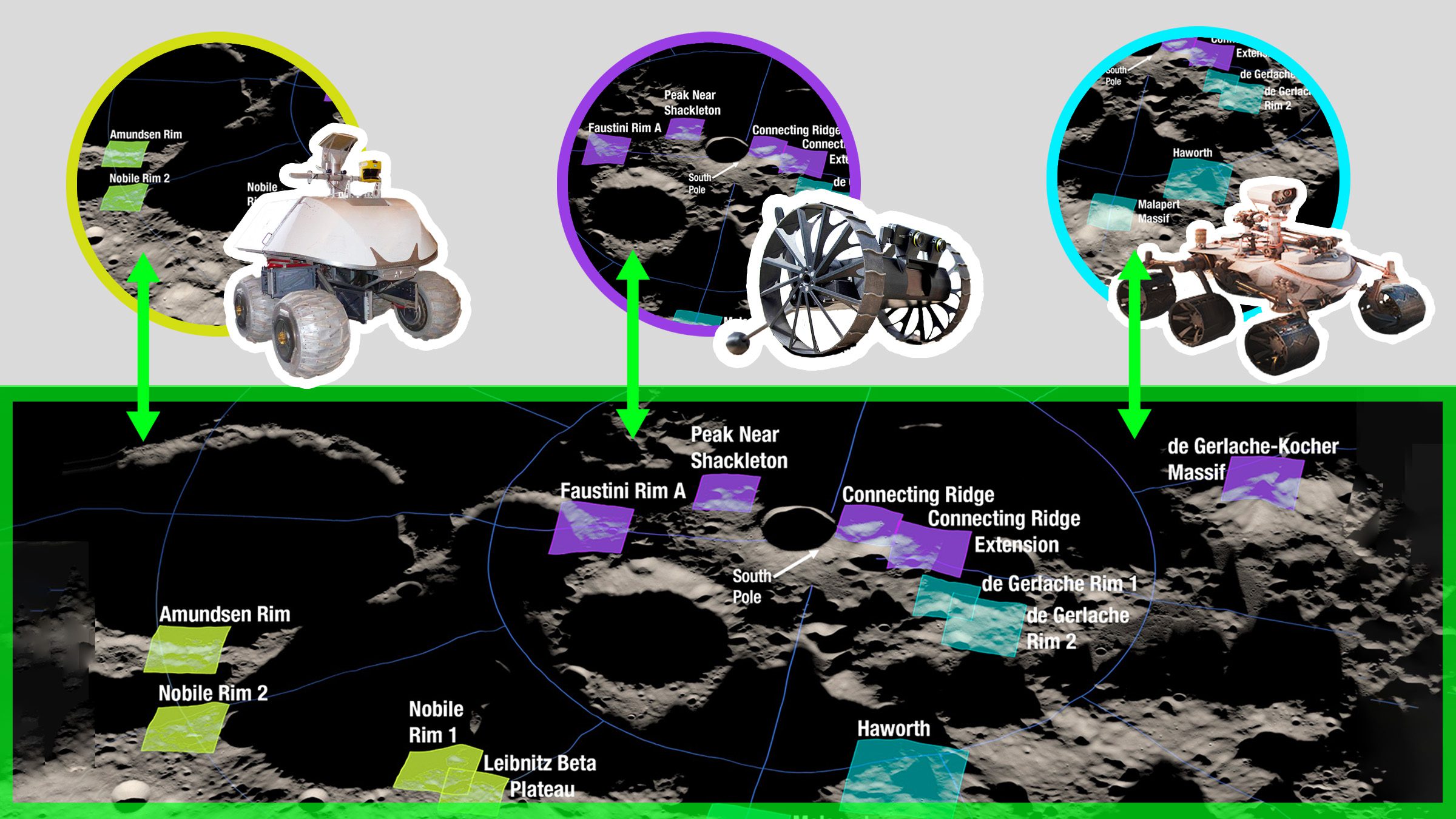ASTER
A system to explore cooperation and
behavior allocation of autonomous teams
A system to explore cooperation and behavior allocation of autonomous teams
Autonomous Swarming for Teams of Exploration Robots (ASTER)
ASTER improves swarm autonomy and coordination for robot systems exploring the moon. It combines the Swarm Coordination Framework developed at Charles River Analytics and the Buzz Programming Language developed by Dr. Pinciroli at Worcester Polytechnic Institute’s Nest Lab to give robot teams the ability to divvy tasks among themselves, with each robot recognizing which job it can do best, given what it knows about the available tasks and all the other robotic vehicles on its team.
“Robots are our exploration pioneers. To understand our universe and prepare for our presence on a new planet, advance robot teams will have to work together effectively, anticipate each other’s needs, and troubleshoot real-world problems without human intervention.”

David Koelle
Director of Engineering and Swarm Cognition Lead on ASTER
Achieve lunar mission objectives
As efforts grow to explore and understand the lunar surface, NASA must deploy robots that can coordinate their activity autonomously. “Robots can determine what to do next based on their beliefs about what the rest of the swarm is doing,” said Dr. Spencer Lynn, Senior Scientist at Charles River Analytics and Principal Investigator on the ASTER effort. A team of robots can spread out and read signals at a distance to achieve mission objectives.

ASTER employs artificial intelligence inspired by a psychological principle called “theory of mind,” which describes the ability to recognize differences between self and others. Heterogeneous robots introduce the idea that each robot may have a unique set of skills. For example, a fast robot with a sensor can find likely mineral deposits over a large area, and slow robots that are built for digging and collecting samples can follow up at specific locations. ASTER extends the notion of heterogeneity to include the health and status of robots, including factors such as a robot’s battery charge or degradation of its wheels or sensors. The algorithms that the team is developing consider all of these factors when deciding which robot is best suited to perform tasks that are required to support the mission.
Due to dust, mechanical wear, and harsh environments, robots almost always lose some technical capability. Robot teams must learn to anticipate and detect any deterioration that occurs and use their combined capabilities to work around the damage. ASTER will also give the robot team this ability with its degradation and fault management algorithms.
The researchers have completed a feasibility study and developed algorithms for autonomous task allocation as robots’ health and status change during their mission. Now, in Phase II, they are enhancing these algorithms and testing them on real-world robots.
“Collaborative autonomy in space opens the door to so many opportunities for exploring our solar system,” Koelle shared. “With multiple small robots, we can send specialized robots that are equipped for different environments, and we can replace or add to robots that are already on the planets or moons.”
Contact us to learn more about ASTER and our other robotics and autonomy capabilities.

